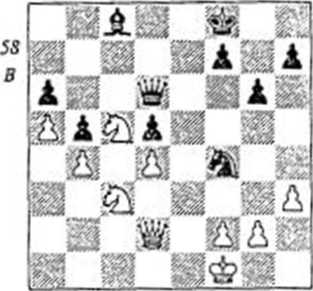
Opening Preparation
Mark Dvoretsky and Artur Yusupov
With contributions from:
Sergei Dolmatov
Yuri Razuvaev
Boris Zlotnik
Aleksei Kosikov
Vladimir Vulfson
Translated by Joint Sugden
В. T. Batsford Ltd, London
First published 1994
© Mark Dvoretsky. Artur Yusupov 1994 Reprinted 1994, 1996 ISBN 0 7134 7509 9
British Library Cataloguing-in-Publication Data. A CIP catalogue record for this book is available from the British Library.
Ail rights reserved. No part of this book may be reproduced, by any means, without prior permission of the publisher.
Typeset by John Nunn GM and printed in Great Britain by Redwood Books, Trowbridge, Wilts for the publishers, В. T. Batsford Ltd, 4 Fitzhardinge Street, London W1H0AH
A BATSFORD CHESS BOOK
Editorial Panel: Mark Dvoretsky, John Nunn, Jon Speclman
General Adviser: Raymond Keene OBE
Commissioning Editor: Graham Burgess
27 ftxcl (56)
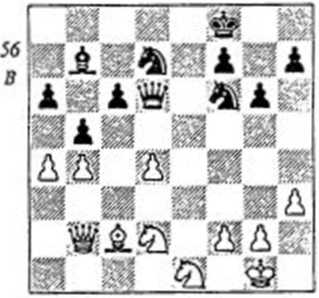
A serious error. Black had the choice of allowing the queensidc to be blocked with a4-a5, or exchanging on a4 himself. Beliavsky assessed the position wrongly. He should have played 27...ba! 28 Axa4 S)b6, with an acceptable game.
Note (hat if 27...'«Fc7, (he answer is not 28 £d3?! <c2, or 28 ФН?! ba 29 Axa4 aS. but 28 £df3! We2 29 aS! Фс4 3O£\j3, followed by fi'cl.
28 a5 &bd5
29 £d3
White has the advantage again, since his opponent is left with a bad bishop.
29 ... Ac8
Attempting to bring the bishop to f5.1 prevent this, of course.
30 £k5 £f4 (57)
Characteristic play by Beliavsky. If he has an opportunity he goes straight for the attack. He now threatens to check on e2 or play 3I...«d5.
57 (V
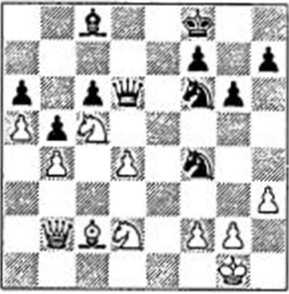
31 Adi!
Perhaps my opponent overlooked this bishop manoeuvre. White has defended against everything, for example 31...WdS 32 Af3. If 31 ...We7, then 32 £jf3 is strong. At this point Black should probably continue 31...h5!?. But just as at move 18, Beliavsky is reluctant to abandon his plan; he persists with (he same manoeuvre, which only weakens his position.
31 ... Wd5
32 Af3 #g5
33 ФП!
Black was hoping for 33 s£h2? 'Й'Ъч. But now he has to sound the retreat To add to his problems, Bc-liavsky was now short of time.
33 ... £6d5
34 £dc4 ttfe7
35 £c3
A leisurely build-up is highly unpleasant for an opponent in time-trouble. I strengthen my position and exchange his active pieces, while he doesn’t know when to expect the decisive events.
35 ... ^d6
The correct reply. When he played it, I first thought that Black was aiming to recapture on d5 with a piece, and I prepared to continue with 36 £3xd5. But suddenly it dawned on me that he might well take with the pawn. When realising an advantage, you usually have better winning chances if the pieces on the board are of different types. Bishop against knight is better than a bishop-versus-bishop ending. I felt that if Black took on d5 with his pawn, I would be better off keeping the knight on c3 than the bishop on f3.
36 AxdS! cd
I was pleased at having figured out my opponent’s plans in time.
37 Wd2 (58)
A little positional riddle: how do you think Black should conduct the

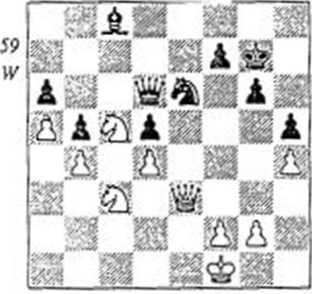
defence? In his time-trouble Beliavsky failed to find the right solution.
The weakness of the dark squares in Black’s camp is palpable. There is nothing to be done about the queen-side, but the gaps on the kingsidc could have been covered by placing pawns on the dark squares f6, g5 and h6 - as is fitting when you have a light-squared bishop. The correct move, retaining chances of successful defence, was 37...g51.
37 ... h5?
I now consider Black’s position hopeless.
38 h4 £g7
39 Й'еЗ Феб (59)
Unfortunately it was now my turn to go wrong.
40 g3?
In principle I don't recommend taking a major decision on move 40. But in this case there was a clear win; two accurate moves, and my opponent could have resigned. I should have played 40 £lxc6+! Дхсб 41 tfeS+l ^xe5 42 de, when the white king is threatening to penetrate. On 42...Г6, White has 43 f4. I saw that the immediate 40 ■’&'c5+ Wxe5 41 de •Йхс5 was unclear, but simply missed the preliminary exchange on c6.
Such mistakes are usually costly. Black has a bad position but he hopes to construct a fortress somehow and maintain it. The process of breaking down the opponent’s defence may prove long and difficult (in actual fact the struggle was to continue for more than 40 more moves). If an opportunity turns up for altering the scene at once to your own advantage, you need to sec it and take it. You may not find such a convenient method afterwards.
40 ... f6
The game was adjourned here. In my analysis I unfortunately failed to find the strongest plan to exploit the advantage; it was shown to me afterwards by Beliavsky.
41 Фс1
The scaled move. When making it, I had formed a reasonable plan. The black knight will soon withdraw to c7. White can bring a knight to f4. but there seems to be no direct win. This being the case, I thought I would need to play Г2-ГЗ and g3-g4 and then push the pawn to g5 to conquer the dark'squarcs. But before advancing the pawns I would need to remove my king from the king-side.
Instead of 41 Фе 1, Bcliavsky suggested 41 to to 42 &f4 ФП 43 «'c 1!!. I hadn’t seen the retreat to с 1 -1 only looked at 43 ’й'сЗ. The main threat is €kd3 and then tt'c5. With the queen on c3. Black would have the defence 43...Wc6. (The point of having the king on fl is not to allow £ке6+.) With the queen on cl this defence doesn't help, since White has 44 £)fd3 (threatening 45 ’ЙЪ6) 44...&g7 45 '®'f4. A splendid way to win! Bcliavsky confessed that on account of this plan he was reluctant to play on at all.
41 ... to
42 Фа2 ^g4
I thought this only helped me to advance my pawns, but my opponent, as it turned out, was trying to prevent the manoeuvre ФсЗ-с2-(4. It is amusing how differently we approached the position.
|
43 |
f3 |
Дсб |
|
44 |
to |
ДГ7 |
|
45 |
g4 |
hg |
|
46 |
Дсб | |
|
47 |
gs |
AfS |
|
48 |
gt+ |
ФхГб |
If 48...«'xf6, then 49 Ve5 is decisive, but after the move played, White can win easily with 49 wb6!
which has the same idea: '^8+ and <e5.
49 #g5+? ФГ7
50 'wc3
By now I had noticed my mistake and was trying to put it right. I withdrew my queen in the hope that Be-liavsky would return his king to f6 to prevent 51 й'еб. But he was on the alert and found the only correct defence. despite mutual time-trouble.
50 ... £e6! (60)
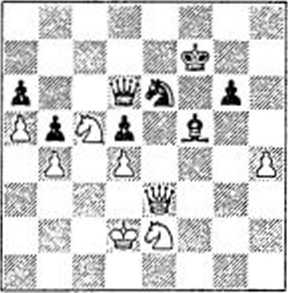
It has suddenly become quite unclear how to make progress. White's hands are tied by the exposed position of his king. Time on the clock was very short. I realised that I was on the verge of having to say goodbye to my drcams of winning. And then I succeeded in finding the solution, perhaps one of the best in the whole game.
51 wg3!
A committal move, since several pawns arc going to be exchanged. White will only be left with two. I saw I was obtaining the better knight endgame, but didn't know if it was a win. Still, even this opportunity was one that might not recur.
51 ...
If 51...Фхс5, then 52 de with a large positional plus, since 52...Wf6 is met by 53 Ш4, controlling the very important d4 point.
52 £)xg3 £xd4
53 £xfS! gf
After 53..ЛЫ5 54 -йхаб, the continuation 54...&xh4 55 £te7 is bad for Black, while on 54...Фс7 White has the decisive 55 Фс5 &d4 56 аб £c6 57 ФеЗ. intending £ld4 ors£?f4-g5.
57 Qd4 (61)
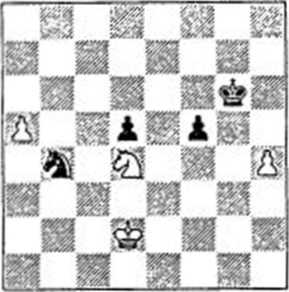
This is the position White has been aiming for, on the correct assumption that his passed pawns on the wings are stronger than his opponent’s in the centre. Some interesting play now commences. I thought that Black had two moves: 57...Ф115 and 57.,,f4. I planned to meet the latter with 58 Фе2 ФЬ5 59 ФО ФхЬ4 60 Фxf4. There is only one pawn left on each side, but Black cannot save himself. The white king goes to the quecnsidc and drives the knight away. The pawn on d5 is merely a hindrance to Black.
The other variation goes 57...ФЬ5 58 ФсЗ £a6 59 21xf5 Фб4 60 ФсЗ ФхЬ4 61 43xd5 Ф85 62 Фс4 Фf5 63 ФЬ5 £Ь8 64 £Ь4 Феб 65 £кб Odl 66 аб. and wins.
Beliavsky found a third possibility; he played a cunning waiting move. But there is no longer a way to
|
save the game. | ||
|
57 |
0>лб | |
|
58 |
ФеЗ |
Ос 5 |
|
59 |
ФГ4 |
£d3+ |
|
60 |
ФеЗ |
&Ь4 |
|
61 |
ФГ4 |
&d3+ |
|
62 |
ФП |
2>b4 |
|
63 |
0x2 |
ФГ6 |
|
64 |
014 |
d4 |
Something is achieved: the pawn has been forced to advance to a square where it is more easily attacked. But then, 62...Фе5 loses at once to 63 Qd3+1.
65 Фе2 ФП
66 Фб1! ФГ6
67 Ф62
Placing the opponent in zugzwang is always pleasant
67 ... ФГ7
White can win in various ways. I decided to eat the pawn.
|
68 |
0x2 |
Феб |
|
69 |
Qxd4 |
f4 |
|
70 |
Фе2 |
ФЬ5 |
|
71 |
ФП |
ФхЬ4 |
72 ФхГ4
The win is very simple now, because a knight always has great difficulty coping with a rook's pawn.
The final moves were: 72...ФЬ5 73 Фс5 3-g6 74 *d6 ФП 75 Фс5 £а6+ 76 ФЬб &Ь4 77 Феб £jd5+ 78 ФЬ7 Феб 79 аб Фё7 80 а7 £с7 81 Фс5+ Фс18 82 £с4 Фа8 83 ФЬб ®с7 84 Феб 1-0
The game could have finished sooner if I had played more precisely. As it was, a curious and (I am afraid) fairly typical picture emerged. White solved the problems of the position and acquired a plus. Afterwards he weakened, committed inaccuracies and gave away all his advantage or a large part of it. Then he took control again, outplayed his opponent again, and began to be careless again. Certainly, it is hard to play faultlessly the whole time if the opponent is resisting for all he is worth; in such cases errors are only to be expected.
Now an example from a different opening - the Caro-Kann. The game was one of my few wins in the Hastings tournament. There were only three of them - yet they were enough for first place with a little to spare.
Dolmatov-Spcclman
Hastings 19S9/90 Caro-Kann
5 ^сЗ еб
6 Qf3 ДЬ4
I nearly always play the Panov Attack, which often leads to a line of the Nimzo-Indian - as it docs here.
7 Ad3 de
8 Axc4 0-0
9 0-0 £bd7 (62)
62
W
2 USft g
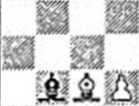
l’s s
a
д.й1 а -йлд
A book position. There has been nothing new here for a long time. I know about 10 Scl and 10 ДОЗ. Black replies 1О...ДхсЗ 11 be Ьб followed by 12...ДЬ7. While develops his bishop on g5, leading to a complex struggle. Theory considers that White has no particular advantage.
On the day of this game, I was in the mood for playing unconventionally - especially since my opponent was Jon Speelman, no ordinary player himself, who looks for complications and heads straight towards them. A very active player, he makes a congenial opponent - he produces interesting games. I decided to continue ambitiously and sacrifice a pawn on c3 with 10 £g5!?.
I had made an analogous sacrifice before, in a game against Flesch (Bucharest 1981). But in that game, instead of 9...£)bd7, my opponent played the immediate 9...ДхсЗ?! 10 be Фс?. There followed 11 ДёЗ!? ■2Jbd7 (ll...Wxc3 is strongly answered by 12 ДГ4) 12 ДаЗ! Se8 13 £d2! 3d8 (not 13...Wxc3 14 £c4 and wins) 14 'ЙТЗ £)f8 15 ■?ie4, with an obvious advantage to White. As you see, the bishop didn't go to g5 in any variation; at that time, I thought there was nothing for it to do there. But now I decided to try it. The idea occurred to me at the board; I hadn’t analysed it at home.
Speclman is a bold player, and of course he accepted the offer.